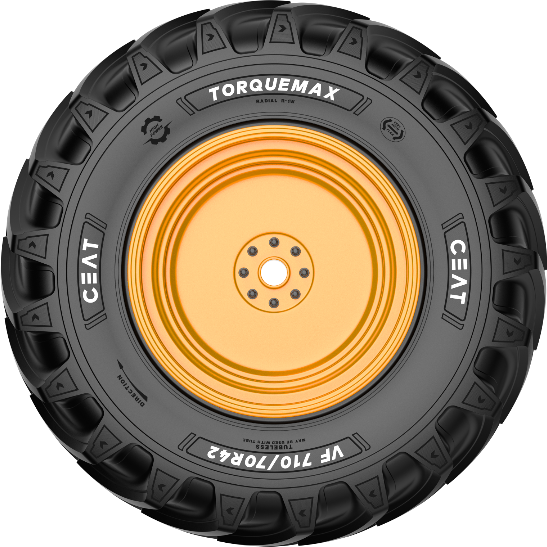



Have Questions Related to CEAT Specialty Tires?
FAQs
The tire size of your combined harvester is denoted as 650/75 R32, where 650mm is the width of the tire, the sidewall height is 75% of the width, and the wheel diameter is 32 inches. The letter R indicates radial construction. Alternatively, the same tire size can be written as 25.5-32, where the tire width is 25.5 inches and the wheel diameter is 32 inches.
Due to long periods of inactivity, harvest tires are prone to developing cracks and flat spots. It is important to inspect both sides of the tire for bulges and cracks before using the harvester on the farm. If any such damages are detected, it is recommended to replace the tire immediately. Once the harvester is in motion, regularly monitor the tire pressure for any leaks and look for any signs of a flat spot on the tire's surface after running it for some time. If such issues are found, it is advisable to replace the tire.
CEAT's specialized tires for harvesters are designed with a compound that is puncture-resistant yet flexible enough to carry higher pressures. This allows for a higher load and more effortless momentum on gradients. The tread patterns are optimized for excellent grip and traction while distributing weight evenly on the soil to reduce compaction. Additionally, the center lugs of the tire provide durability and reliability, no matter the terrain you're using them on.
A harvester tire has a different design compared to a regular tire. The tread pattern on a harvester tire is optimized for use in agriculture, providing better traction and stability on uneven terrain. Harvester tires are also built to withstand heavier loads and have thicker sidewalls that help prevent punctures and cuts.
To choose the right harvester tire, you need to consider several factors such as the type of crop you are harvesting, the soil conditions, the weight of the machine, and the size of the tire. CEAT Specialty offers a range of harvest tires designed to meet the specific needs of different machines and crops.





